Today I went to the fifth annual London Honey Show at the Lancaster London hotel. The Show includes the honey competition, talks and stalls to visit. This was the first year it’s been held at the weekend rather than a weekday evening. It seemed a bit less busy than usual, but that may have been because it was on for longer.
Below are the London honeys entered in the tasting competition. You can see the variety of colours from pale yellows to dark reds.
Some cute art work done by children at a local school.
I especially liked the ecstatically grinning bees below, which have wings the size of butterflies.
Hotel hives
The hotel has hives on their roof; one of the two employees who helps looks after the bees showed us up to a room with a view of the hives. Though there are nine hives down there, only one is occupied at the moment, following problems with colonies dying out due to varroa.
I missed the first talk but arrived in time to hear James Hamill, “Tales of beekeeping from around the world”.
James owns the Hive Honey Shop, a family-run business on Northcote Road, SW11. He has over 100 beehives and practises migratory beekeeping, moving the hives to secret locations in remote areas. He does rooftop beekeeping in London too and has kept bees for the royal family at St James’ Palace and Highgrove.
He meets with the beekeepers whose honey he sells to make sure their honeys are minimally processed, rather than heat treated and blended together from multiple hives.
His life made me very jealous, as in-between running the shop he likes to travel internationally to meet beekeepers in other parts of the world. He showed us photos from many places including Uganda, St Lucia, Turkey and Tuscany. He donates equipment to the beekeepers he visits and also purchases honey and old hives for his collection of historical beehives. His attic contains hundreds of honeys!
He has trekked to watch the honey hunters of Nepal, who construct their rope from natural materials gathered that day, then scale cliffs to take the giant combs of Apis Dorsata bees. They will slaughter a goat before setting off – if the goat had a healthy liver they go ahead, if not this is a sign from god not to go. The honey hunting expedition is a perilous one.
James watched the local children standing underneath the cliffs as the honey was collected. They held their mouths open in delight as the honey rained down, not caring despite getting stung all over by the wrathful bees. Not just the honey is taken but the larvae too, which is a great source of protein. It’s eaten boiled up with saffron.
A member of the audience asked how many colonies James lost last winter – he said none (apart from two nucs). He puts this success down to “absolute cleanliness”. He changes his equipment each season, using different summer equipment and winter equipment. Frames are changed each year. He uses wooden hives so that he can scorch them with a blowtorch and destroy potential diseases and pests (as Emma and I do too). For this reason he dislikes polystyrene or plastic hives, as they require chemicals to clean them. He uses thymol as a varroa treatment and has also used eucalyptus and peppermint oils.
Competition winner!
Jonesy won the best packaging award for his Kew honey. A win for Ealing!

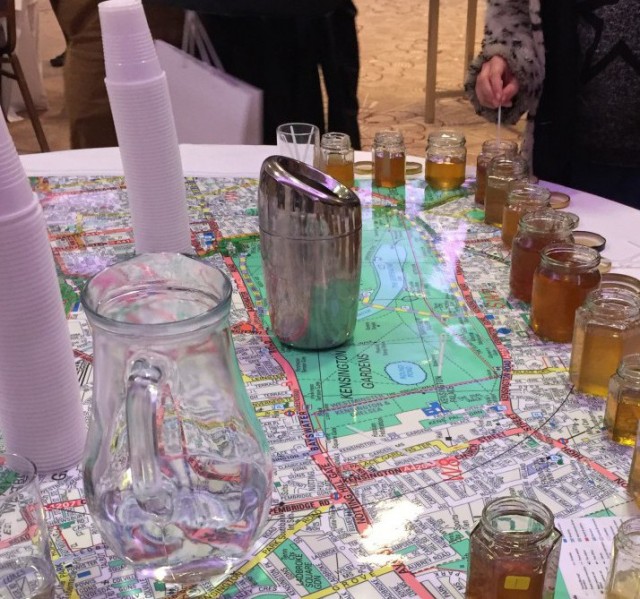
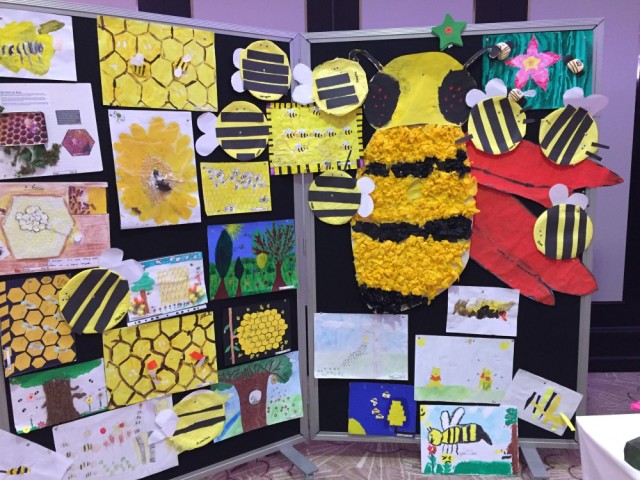
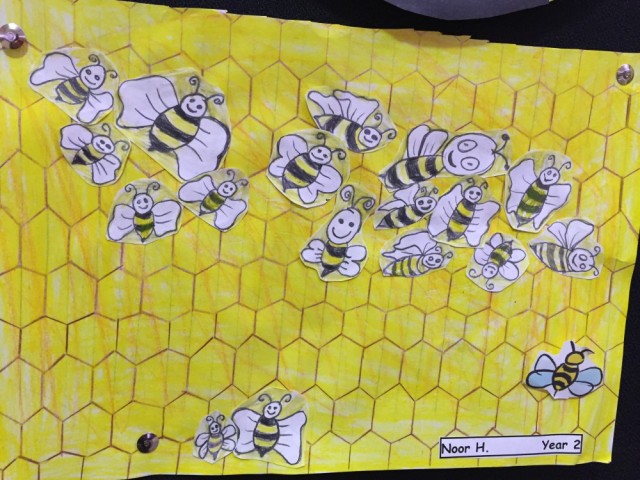
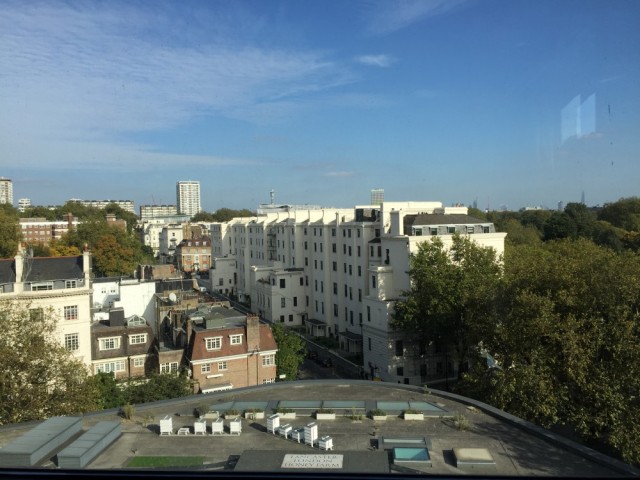
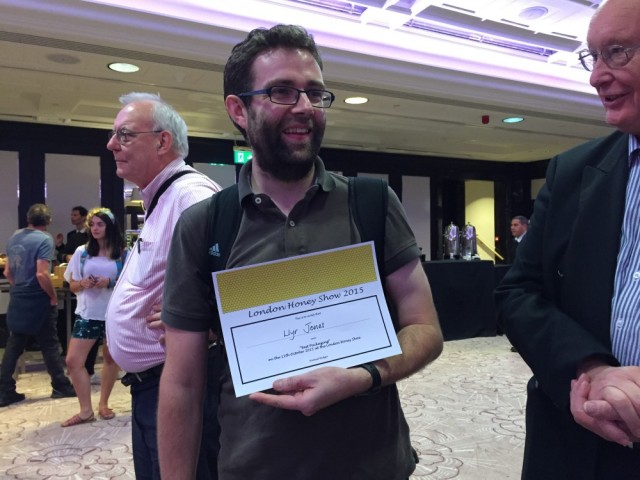
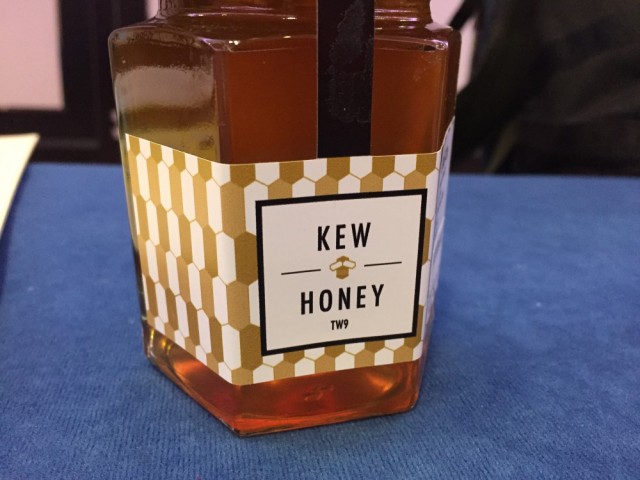
I suspect if I were tuned into the bee-keeping culture I would know of similar shows here. Although, perhaps that happens at state fairs, and I’ve not attended one in many decades.
. . . makes me want to go have a toast with honey . . .
LikeLike
This is the time of year for honey shows, so there probably is one nearish to you. I could do with some toast with honey too.
LikeLike
We’ve never been to anything like this. We might be able to get ourselves together to catch the one in Weybridge, Surrey in 2016 now we know about these events. Amelia
LikeLike
I don’t go to that many but perhaps I will go in 2016 as it would be lovely to meet you in real life!
LikeLike
Now that’s an appealing idea!
LikeLike
Particularly loved learning about bee-keeping in foreign climes, Emily! Slaughtering goats is a new one on me …
LikeLike
And me too. But I can imagine that when embarking on such a hazardous activity it would be nice to have some supernatural reassurance first.
LikeLike
Pingback: Are you a Farmer? | Hen Corner
I missed the result of taste test, any idea who won that one?
LikeLike
Hi Peace, it was the Lancaster London hotel honey that won! The results are up at http://www.londonbees.com/results-london-honey-show-2015/
LikeLike
That Kew packaging is beautiful.
LikeLike
It certainly is – I’ll pass your compliments on to Jonesy.
LikeLike
Hi Paul, thanks for your nice compliment!
LikeLike
Beekeeping used to be one of the easiest things to do on the farm. All we did was collect the honey and catch swarms. Now it’s hard to keep them alive. I’ve never used a blowtorch on the equipment (instead I put the frames in a chest freezer and freeze them solid for a few weeks) and I don’t have separate summer and winter equipment. Now your post has me wondering if I need to do that as well. We have two hives going into the winter and I’m hopeful that they’re going to make it.
On a brighter note I love seeing the hives on the hotel roof. That’s the kind of thing I’d like to see more of, as long as they’re filled with healthy bees.
LikeLike
It has got harder, we have so many more pests and diseases now. I put the frames in a freezer too to kill off wax moth, but lightly blowtorching inside the boxes and roofs themselves once a year is also a good idea. I don’t have separate summer/winter equipment either and haven’t come across anyone who does before – it’s an unusual step but seems to be working for him.
There is evidence that changing brood frames annually is a good hygienic practice to stop diseases. Some viruses and spores, including AFB, are resistant to freezing and also boiling.
There’s a trend in central London businesses to keep roof-top bees; it’s a bit controversial here as there’s not a huge amount of forage in central London, but some of them seem to do very well. There is a park near these hives.
LikeLike
Pingback: Lancaster London - Afternoon Tea with a Twist - MilesGeek